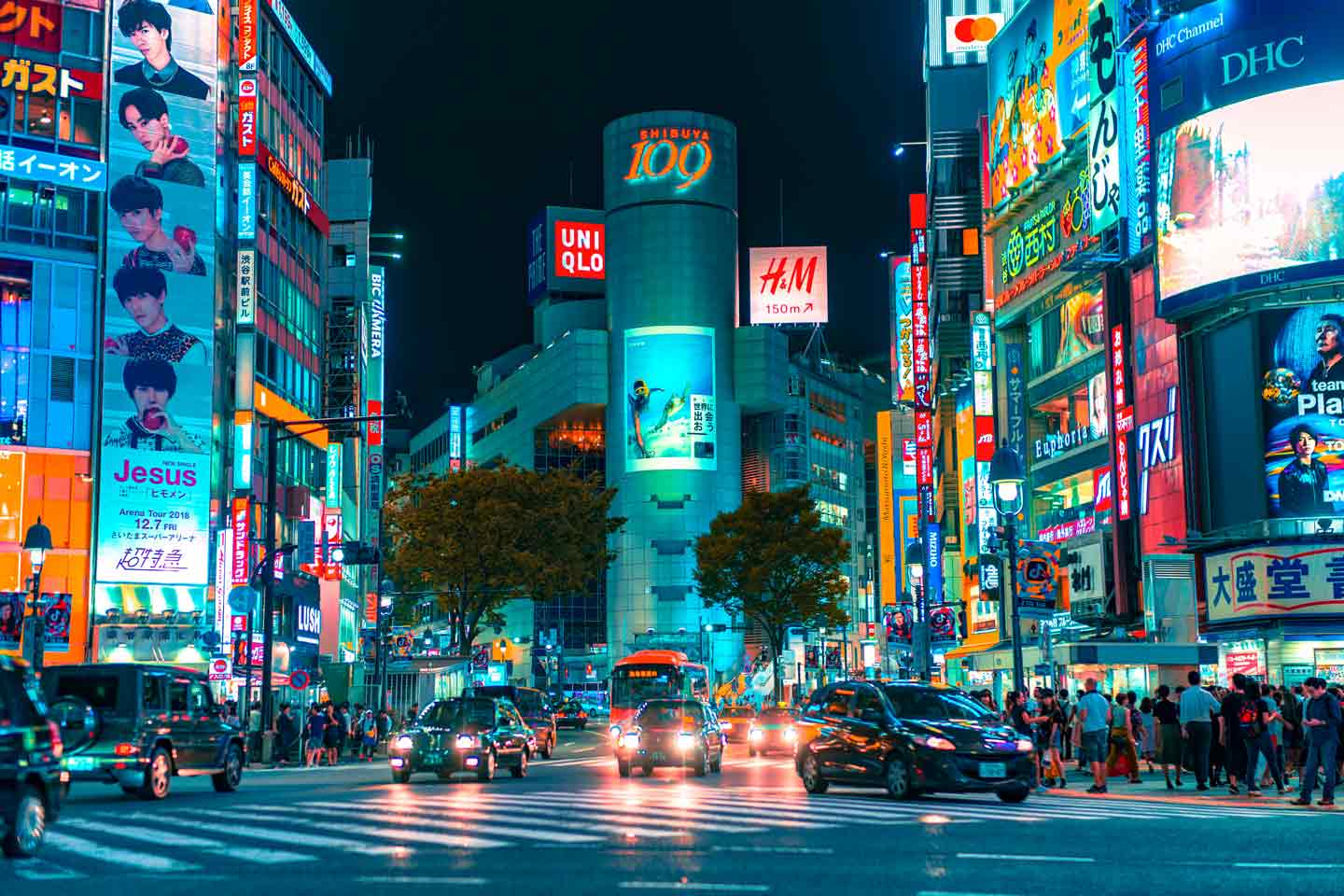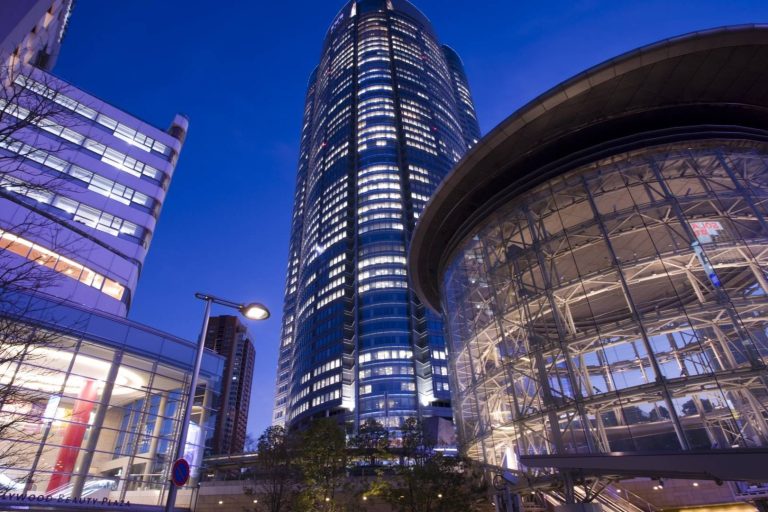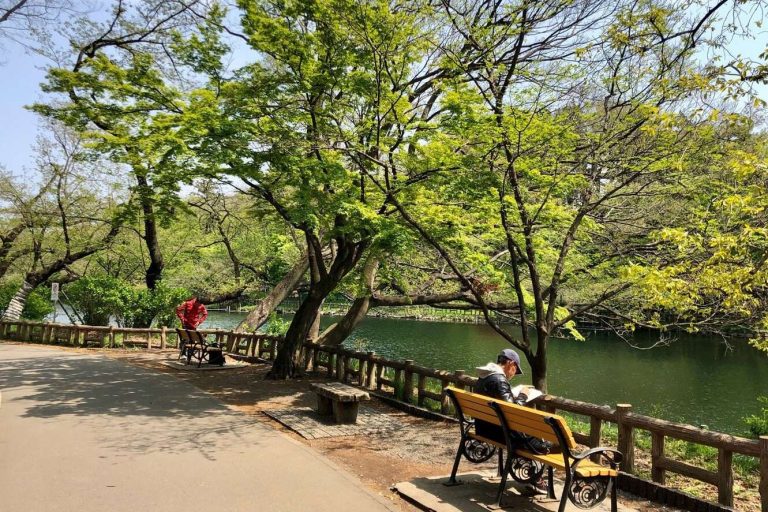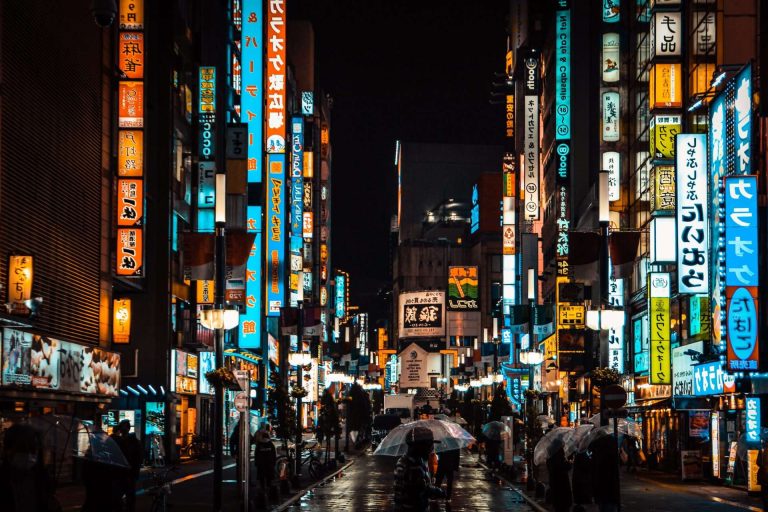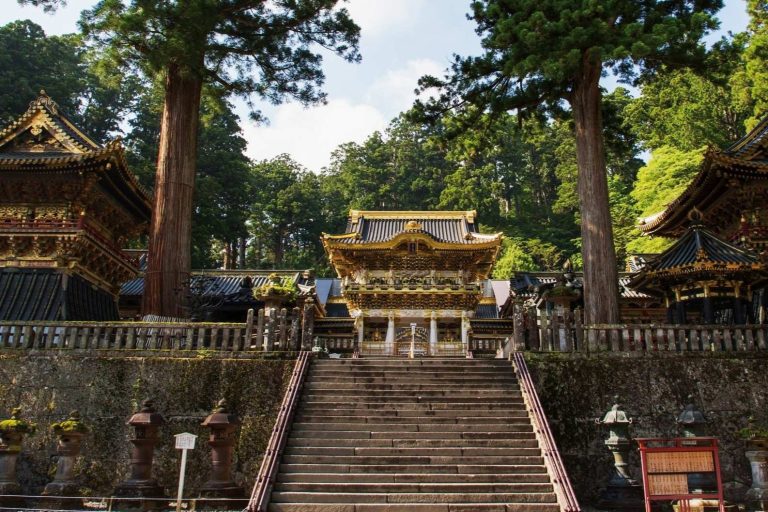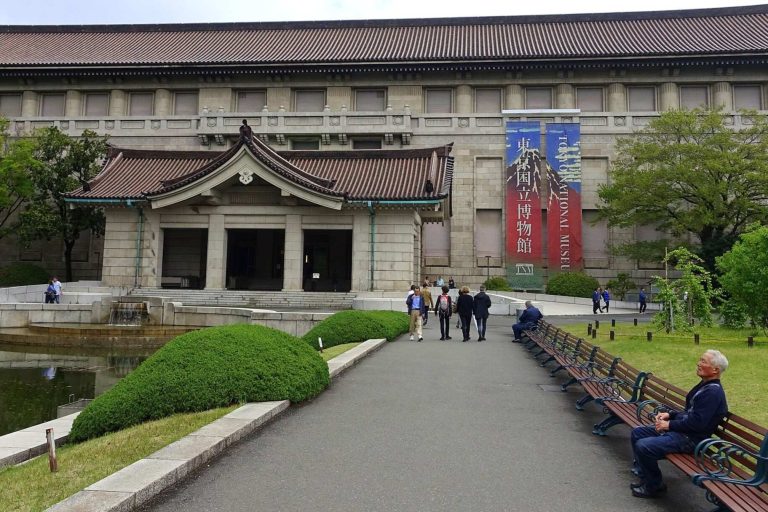Overview of Shibuya
Stepping into Shibuya feels like entering the beating heart of modern Tokyo. This iconic district pulses with an energy that’s both exhilarating and overwhelming, where neon lights paint the streets in vibrant hues and millions of people cross paths daily at the world’s busiest intersection. Shibuya represents the perfect fusion of traditional Japanese culture and cutting-edge urban innovation, making it a must-visit destination for anyone seeking an authentic Tokyo experience.
The district has undergone massive transformation in recent years, with gleaming skyscrapers rising alongside historic alleyways that have remained unchanged since the 1950s. This unique juxtaposition creates an atmosphere where you can sip craft cocktails in a modern rooftop bar one moment, then duck into a tiny traditional izakaya the next. Shibuya’s magnetic appeal lies in its ability to cater to every taste and preference, whether you’re a fashion-forward teenager, a business professional, or a curious traveler.
Introduction to Shibuya’s Cultural Significance
Shibuya stands as more than just a commercial district; it’s a cultural phenomenon that has shaped global perceptions of Japanese youth culture and urban lifestyle. The area gained international recognition through movies, anime, and social media, becoming synonymous with Tokyo’s fast-paced, trend-setting culture. The famous Shibuya Crossing has become an iconic symbol of Japan itself, representing the organized chaos and efficiency that characterizes Japanese society.
The district serves as a launching pad for fashion trends, musical movements, and technological innovations that eventually spread throughout Japan and beyond. Young people from across the country flock to Shibuya to experience the latest in fashion, entertainment, and nightlife, making it a living laboratory of contemporary Japanese culture.
Key Attractions and Landmarks
The towering presence of Shibuya Scramble Square dominates the skyline, housing Shibuya Sky, Japan’s highest outdoor observatory. This architectural marvel offers breathtaking 360-degree views of Tokyo, including clear sights of Mt. Fuji on sunny days. The building itself represents the new wave of urban development that’s transforming the district while maintaining its vibrant character.
Miyashita Park, reopened in 2020, exemplifies Shibuya’s innovative approach to urban planning. This multi-level complex combines shopping, dining, and green space in a unique rooftop park design. The facility demonstrates how modern Tokyo addresses space constraints while creating community gathering places that blend nature with urban convenience.
Shopping and Dining Experiences
Shibuya’s culinary landscape offers everything from Michelin-starred restaurants to hole-in-the-wall ramen shops that locals have cherished for decades. The district’s dining scene reflects Japan’s incredible food culture, where quality and attention to detail matter more than flashy presentations. Street food vendors, department store food courts, and elegant restaurants coexist harmoniously, creating options for every budget and preference.
The shopping experience ranges from massive department stores filled with international brands to quirky independent boutiques tucked away in narrow side streets. This diversity ensures that whether you’re hunting for luxury goods or unique vintage finds, Shibuya delivers experiences that satisfy every shopping desire.
Shopping in Shibuya
Shopping in Shibuya offers an unparalleled retail adventure that spans multiple levels, both literally and figuratively. The district’s shopping landscape has evolved dramatically, with new complexes complementing traditional department stores to create a comprehensive retail ecosystem. From underground malls to sky-high shopping floors, Shibuya caters to every shopping style and budget, making it a paradise for both serious shoppers and casual browsers.
The area’s retail evolution reflects broader changes in Japanese consumer culture, where experiential shopping has become as important as the products themselves. Modern shopping complexes integrate dining, entertainment, and social spaces, transforming shopping from a simple transaction into a full-day experience. This approach has made Shibuya a model for urban retail development worldwide.
Miyashita Park: A Modern Shopping Complex
Miyashita Park revolutionizes the concept of urban shopping by combining retail therapy with outdoor recreation. This innovative complex features a rooftop park complete with sports facilities, including a skate park and climbing wall, positioned above three floors of shops and restaurants. The design creates a unique shopping environment where visitors can take breaks from browsing to enjoy fresh air and physical activities.
The complex houses both international brands and local Japanese retailers, offering a curated selection that reflects contemporary Tokyo style. The integration of green spaces with commercial areas demonstrates how modern urban planning can address multiple needs simultaneously, creating destinations that serve communities beyond simple commerce.
Shibuya Scramble Square’s 200+ Shops
Exploring Shibuya Scramble Square reveals a vertical shopping wonderland that stretches across multiple floors, each offering distinct retail experiences. The complex houses over 200 shops and restaurants, ranging from high-end fashion boutiques to casual dining establishments. The careful curation ensures that visitors can find everything from the latest Japanese fashion trends to international luxury brands.
The building’s design facilitates easy navigation between floors, with each level maintaining its own character and focus. Fashion floors showcase both established and emerging designers, while food floors offer everything from quick snacks to elaborate dining experiences. The variety ensures that every visit can yield new discoveries.
Underground Department Store at Shibuya Mark City
The underground shopping area at Shibuya Mark City provides a completely different retail atmosphere, offering refuge from Tokyo’s bustling streets while maintaining the energy that defines Shibuya shopping. This subterranean retail space connects directly to train stations, making it incredibly convenient for commuters and travelers alike.
The underground layout creates an intimate shopping experience where smaller boutiques and specialty stores thrive alongside larger retailers. The space efficiently utilizes every square meter, demonstrating Japanese expertise in maximizing limited urban space while creating comfortable, appealing retail environments.
Nightlife Options in Shibuya
Shibuya’s nightlife scene rivals any major global city, offering experiences that range from intimate traditional bars to pulsing nightclubs that keep the party going until dawn. The district’s nightlife reflects its diverse population, with venues catering to young party-goers, business professionals seeking after-work relaxation, and international visitors eager to experience authentic Japanese drinking culture. Unlike the more upscale nightlife found in areas focused on Shinjuku nightlife, Shibuya maintains a more accessible, youth-oriented atmosphere that welcomes experimentation and spontaneity.
The evolution of Shibuya’s nightlife mirrors broader changes in Japanese social culture, where traditional drinking customs blend with international influences to create unique experiences. Modern establishments respect time-honored traditions while incorporating contemporary elements that appeal to younger generations, ensuring the district’s nightlife remains relevant and exciting.
Bar Hopping and Karaoke Experiences
Bar hopping in Shibuya offers an incredible journey through different atmospheres and drink cultures, with each establishment providing its own unique character and specialty. The district’s compact layout makes it easy to visit multiple venues in a single evening, allowing visitors to experience the full spectrum of Tokyo’s drinking culture. From craft cocktail bars run by award-winning mixologists to casual standing bars where salarymen unwind after work, the variety ensures memorable experiences.
Karaoke culture thrives in Shibuya, with numerous karaoke boxes offering private rooms where groups can sing their hearts out while enjoying drinks and snacks. These venues provide perfect opportunities for visitors to participate in one of Japan’s most beloved social activities while creating lasting memories with friends or fellow travelers.
Izakaya Dining in Nonbei Yokocho
Nonbei Yokocho, a narrow alley lined with tiny bars and eateries dating back to the 1950s, offers an authentic glimpse into Tokyo’s post-war drinking culture. These intimate establishments, some seating fewer than six people, provide incredibly personal experiences where conversations with locals and fellow visitors flow as freely as the drinks. The alley’s preservation amid Shibuya’s rapid development demonstrates the importance of maintaining cultural heritage in modern urban environments.
The izakaya in this historic area serve traditional Japanese pub food alongside an impressive selection of sake, beer, and spirits. The close quarters naturally encourage interaction, making these venues perfect for solo travelers or small groups seeking authentic cultural experiences rather than tourist attractions.
Emerging Nightclubs and Pubs
Shibuya’s club scene continues evolving with new venues that blend international club culture with Japanese hospitality and attention to detail. These establishments feature world-class sound systems, innovative lighting, and carefully curated music programming that attracts both local club-goers and international party enthusiasts. The clubs maintain high standards for both music quality and customer experience, ensuring memorable nights out.
Modern pubs in the area offer more relaxed alternatives to traditional izakaya, featuring international beer selections, pub food with Japanese twists, and atmospheres that encourage longer stays and deeper conversations. These venues bridge cultural gaps, providing familiar comfort for international visitors while introducing locals to global drinking traditions.
Cultural Landmarks
Shibuya’s cultural landmarks tell stories that span decades, from symbols of unwavering loyalty to powerful reminders of historical tragedy. These sites provide essential context for understanding both the district’s character and Japan’s broader cultural narrative. Visitors who take time to appreciate these landmarks gain deeper insights into the values, history, and artistic expression that shape contemporary Japanese society.
The preservation and presentation of these cultural sites amid rapid urban development demonstrates Japan’s commitment to maintaining historical memory while embracing progress. Each landmark offers unique perspectives on different aspects of Japanese culture, from the importance of loyalty and dedication to the complex relationship with wartime history.
The Hachiko Statue: A Symbol of Loyalty
The bronze statue of Hachiko stands as perhaps Japan’s most famous symbol of loyalty and devotion, commemorating the Akita dog who waited for his deceased owner at Shibuya Station every day for nearly ten years. This touching story resonates deeply with Japanese values of faithfulness and dedication, making the statue a pilgrimage site for both locals and international visitors seeking to understand Japanese cultural values.
The statue serves as a popular meeting point, with thousands of people gathering around it daily. The surrounding area has become a natural gathering space where the story of Hachiko continues to inspire conversations about loyalty, love, and the bonds between humans and animals.
Myth of Tomorrow Mural: A WWII Memorial
The Myth of Tomorrow mural, created by renowned artist Taro Okamoto, presents a powerful and haunting depiction of nuclear devastation that serves as both artistic masterpiece and historical memorial. Located within Shibuya Mark City, this massive work confronts viewers with stark imagery that reflects Japan’s unique relationship with nuclear weapons and the lasting impact of World War II.
The mural’s placement in a busy commercial area ensures that its message reaches diverse audiences, from daily commuters to international tourists. The artwork’s bold style and controversial subject matter spark important conversations about war, peace, and humanity’s relationship with destructive technology.
Exploring Historic Nonbei Yokocho Alley
Nonbei Yokocho represents a living museum of post-war Tokyo culture, where narrow passages between tiny bars create an intimate atmosphere that has remained largely unchanged since the 1950s. Walking through these alleys feels like stepping back in time, offering glimpses into how ordinary Japanese people socialized and found community during the country’s reconstruction period.
The alley’s survival amid massive urban redevelopment projects demonstrates the importance that both locals and city planners place on preserving authentic cultural spaces. The area continues functioning as originally intended, with regular customers maintaining relationships with bar owners that span decades, creating genuine community connections in the heart of one of the world’s busiest districts.
Food Tours and Culinary Experiences
Shibuya’s food scene offers incredible diversity that reflects both traditional Japanese cuisine and the district’s international character. From street food stalls serving quick bites to elegant restaurants offering multi-course kaiseki meals, the area provides culinary adventures for every taste and budget. Food tours have become increasingly popular as they provide structured ways to experience the district’s incredible variety while learning about Japanese food culture from knowledgeable guides.
The district’s culinary landscape changes constantly, with new restaurants opening regularly while established favorites maintain their loyal followings. This dynamic environment ensures that even frequent visitors can continually make new culinary discoveries, whether seeking traditional flavors or innovative fusion creations.
Local Eateries and Ramen Bars
Shibuya’s ramen scene showcases the incredible diversity within this beloved Japanese comfort food, with shops specializing in different regional styles and innovative interpretations. From rich tonkotsu broths simmered for hours to light, clear shoyu-based soups, the variety ensures that ramen enthusiasts can explore different flavor profiles without leaving the district. Many shops operate late into the night, making them perfect destinations for post-drinking meals.
Local eateries beyond ramen offer everything from okonomiyaki grilled at your table to delicate tempura prepared by masters of their craft. These establishments often occupy small spaces but deliver outsized flavors, demonstrating how Japanese cuisine emphasizes quality and technique over elaborate presentations. The intimate settings naturally encourage interactions with chefs and fellow diners.
Dietary Options in Shibuya
Shibuya’s food scene has adapted to accommodate diverse dietary requirements, with increasing numbers of restaurants offering vegetarian, vegan, halal, and gluten-free options. This evolution reflects both the district’s international character and changing Japanese dietary preferences, particularly among younger generations who are more health-conscious and environmentally aware.
Specialized restaurants focusing on specific dietary needs have opened alongside traditional establishments that have expanded their menus to include alternative options. This development makes Shibuya more accessible to international visitors with dietary restrictions while introducing local diners to new culinary approaches and ingredients.
Popular Food Streets and Recommendations
The food streets surrounding Shibuya Station create a dense concentration of dining options that range from quick grab-and-go meals to sit-down restaurants requiring reservations. These areas buzz with activity throughout the day and late into the night, with different streets developing their own characters and specialties. The variety ensures that food lovers can spend days exploring without exhausting the options.
Recommendations from locals often lead to the most memorable dining experiences, as they know which establishments offer the best value, most authentic flavors, or most innovative approaches. Building relationships with restaurant staff and fellow diners often yields invitations to hidden gems that don’t appear in guidebooks but provide unforgettable culinary experiences.
Safety Tips for Nightlife
Enjoying Shibuya’s vibrant nightlife safely requires understanding both general urban safety principles and specific considerations for Tokyo’s unique social environment. While Tokyo ranks among the world’s safest major cities, the combination of alcohol, crowds, and unfamiliar surroundings can create situations that require awareness and preparation. Smart planning and situational awareness ensure that nights out remain fun and memorable for all the right reasons.
The district’s safety infrastructure includes numerous koban (police boxes) staffed by officers who often speak some English and are trained to assist tourists. Additionally, most establishments maintain high safety standards and employ staff trained to handle various situations, creating multiple layers of protection for visitors enjoying the nightlife.
General Safety Guidelines
Basic safety principles apply universally but take on special importance in busy nightlife districts where alcohol consumption and crowd dynamics can create unpredictable situations. Staying aware of your surroundings, keeping track of personal belongings, and maintaining communication with your group or hotel helps prevent most common problems. Carrying emergency contact information and knowing your hotel’s address in Japanese ensures you can get help or return safely even if language barriers arise.
Understanding Japanese social customs around drinking and nightlife helps visitors navigate situations appropriately and avoid unintentional offense. Japanese drinking culture includes specific etiquette around group drinking, payment customs, and appropriate behavior that, when respected, enhances safety and social acceptance.
Navigating Shibuya at Night
Shibuya’s layout can become confusing at night when neon signs and crowds create sensory overload, making it easy to lose orientation or miss important landmarks. Familiarizing yourself with major landmarks and station exits during daylight hours provides reference points for nighttime navigation. The district’s numerous train and subway lines offer multiple routes back to accommodations, but understanding which lines operate late and which close early prevents transportation difficulties.
Smartphone apps with offline maps and translation capabilities provide essential backup navigation tools, while portable battery packs ensure devices remain functional throughout long nights out. Many visitors find it helpful to photograph their hotel entrance and nearby landmarks to aid recognition when returning late at night.
Emergency Contacts and Resources
Knowing how to access emergency services and support resources provides peace of mind and practical assistance when needed. Japan’s emergency number system differs from many countries, with separate numbers for police, fire, and medical emergencies. Tourist hotlines offer English-language support for non-emergency situations, while embassy contact information provides additional resources for serious problems.
Many hotels provide 24-hour concierge services that can assist with various issues, from medical referrals to transportation problems. Establishing relationships with hotel staff and keeping their contact information readily available creates a reliable support network for addressing unexpected situations.
Transportation and Accommodation
Shibuya’s position as a major transportation hub makes it incredibly accessible from anywhere in Tokyo and beyond, with multiple train and subway lines converging at Shibuya Station. This connectivity, combined with the district’s concentration of attractions and amenities, makes it an ideal base for exploring Tokyo. The area offers accommodation options ranging from budget hostels to luxury hotels, ensuring suitable choices for every travel style and budget.
The district’s transportation infrastructure continues evolving with new lines and improved facilities that enhance connectivity while managing the massive daily passenger volumes. Recent improvements include better signage, expanded platform areas, and enhanced accessibility features that make navigation easier for both locals and visitors.
Getting to Shibuya
Reaching Shibuya from Tokyo’s major airports involves straightforward train connections that showcase Japan’s efficient public transportation system. From Narita Airport, the Skyliner and JR lines provide direct connections, while Haneda Airport offers even more convenient access through multiple route options. The journey provides an excellent introduction to Tokyo’s train system while building confidence for future navigation.
Domestic travelers arriving from other Japanese cities find Shibuya easily accessible through the extensive JR network, with the famous Yamanote Line providing circular connections to all major Tokyo districts. The station’s size can initially seem overwhelming, but clear signage and helpful staff make navigation manageable with minimal preparation.
Recommended Hotels: Shibuya Excel and Dormy Inn
The Shibuya Excel Hotel Tokyu offers luxury accommodation with direct connections to the station complex, eliminating weather concerns and providing immediate access to shopping and dining options. The hotel’s elevated position provides excellent city views while maintaining the convenience that makes Shibuya an attractive base for Tokyo exploration. Premium amenities and English-speaking staff cater to international guests’ needs.
Dormy Inn Premium Shibuya provides a different but equally appealing accommodation experience, featuring traditional Japanese hospitality elements like onsen baths alongside modern conveniences. The hotel’s location offers easy access to both major attractions and hidden local gems, while the authentic Japanese touches provide cultural immersion without sacrificing comfort.
Public Transport Options in Shibuya
Shibuya Station serves as a crucial hub where multiple train and subway lines intersect, providing connections throughout Tokyo and beyond. The JR Yamanote Line offers circular service connecting all major districts, while subway lines provide more direct routes to specific destinations. Understanding the different operators and ticketing systems helps visitors navigate efficiently while managing transportation costs.
The station’s recent renovations have improved passenger flow and accessibility, though the sheer volume of people can still create challenging conditions during peak hours. Learning to recognize less crowded alternative routes and understanding rush hour patterns helps visitors move through the system more comfortably and efficiently.
Urban Redevelopment and Future of Shibuya
Shibuya’s ongoing transformation represents one of Tokyo’s most ambitious urban redevelopment projects, balancing preservation of cultural heritage with modernization needs. The district serves as a testing ground for innovative urban planning concepts that address challenges common to major cities worldwide, including population density, transportation efficiency, and environmental sustainability. These developments influence urban planning approaches throughout Japan and internationally.
The redevelopment process demonstrates how major cities can evolve while maintaining their essential character and cultural significance. By preserving key cultural elements while introducing modern infrastructure and amenities, Shibuya’s transformation provides a model for sustainable urban development that respects both history and future needs.
Impact of Urban Redevelopment on Culture
Massive construction projects and new building developments have inevitably altered Shibuya’s cultural landscape, raising important questions about balancing progress with preservation. While some traditional establishments have been displaced, others have found new homes in modern buildings, adapting their operations to contemporary contexts while maintaining their essential character. This evolution reflects broader changes in Japanese society and urban culture.
The integration of traditional elements into modern developments demonstrates creative approaches to cultural preservation that go beyond simple museum-style conservation. By finding ways for traditional businesses and cultural practices to thrive within new urban contexts, the redevelopment process ensures that Shibuya’s cultural evolution continues rather than simply ending.
Future Attractions and Developments
Planned developments include additional mixed-use complexes that will further expand Shibuya’s shopping, dining, and entertainment options while improving pedestrian flow and accessibility. These projects incorporate lessons learned from recent developments, with enhanced focus on creating community spaces and maintaining the human scale that makes Shibuya appealing despite its massive size.
Future attractions will likely emphasize experiential elements that cannot be replicated online, focusing on immersive entertainment, cultural experiences, and social spaces that bring people together. The planning process increasingly involves community input and international expertise, ensuring that developments serve both local needs and global appeal.
Preservation of Traditional Areas in Shibuya
Efforts to preserve historic areas like Nonbei Yokocho demonstrate commitment to maintaining authentic cultural spaces amid rapid modernization. These preservation initiatives require creative solutions that protect traditional establishments while ensuring they remain economically viable and accessible to new generations. The success of these efforts influences similar preservation projects throughout Tokyo and Japan.
The challenge lies in maintaining authenticity while allowing for necessary adaptations to modern safety standards, accessibility requirements, and changing business practices. Successful preservation requires ongoing dialogue between traditional business owners, urban planners, and community members to find solutions that honor the past while enabling sustainable futures.
Frequently Asked Questions
What are the main attractions in Shibuya?
Key attractions include Shibuya Scramble Square, Miyashita Park, and the Hachiko Statue.
What types of shopping can I do in Shibuya?
Shibuya offers a wide range of shopping experiences, from luxury brands to unique local boutiques and underground malls.
What is the nightlife like in Shibuya?
Shibuya’s nightlife features a mix of bars, izakayas, and nightclubs, catering to a diverse crowd with varying preferences.
How can I navigate the transportation system in Shibuya?
Shibuya Station is a major transportation hub with connections to multiple train and subway lines, making it easy to explore Tokyo.
Are there any safety tips for enjoying nightlife in Shibuya?
It’s important to stay aware of your surroundings, keep track of personal belongings, and understand local drinking customs.
Experience the Dynamic Essence of Shibuya
Shibuya encapsulates the spirit of Tokyo with its vibrant mix of culture, shopping, and nightlife. Whether you’re indulging in culinary delights, exploring its unique shopping landscape, or enjoying the electric atmosphere of its nightlife, Shibuya offers a rich tapestry of experiences. This district is not just a destination but a living example of how tradition and modernity can harmoniously coexist.
